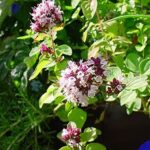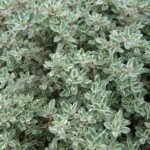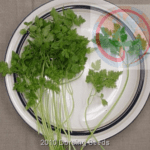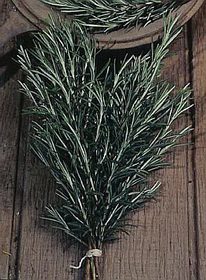Description
Young shoots and leaves are used as a seasoning for stuffings, soups, sausages, sauces, fish and lamb. The flowers have a milder flavor and are used as a flavoring. Both the leaves and flowers are great for teas.
$4.50 – $826.50Price range: $4.50 through $826.50
Young shoots and leaves are used as a seasoning for stuffings.
Seeds/ounce – 17,500
Pkt Weight – 1/168
Young shoots and leaves are used as a seasoning for stuffings, soups, sausages, sauces, fish and lamb. The flowers have a milder flavor and are used as a flavoring. Both the leaves and flowers are great for teas.
| Options | 1 lb, 1 oz, 1/4 lb, 1/4 oz, 1/8 oz, packet |
|---|

The leaves can be used in salads, or to make soup, and the roots can be eaten as a vegetable.
Seeds/ounce – 8,700
Pkt Weight – 1/128
I do not have an image for this product. If you buy and raise this product this year and send me an image of it, I will give you a free pack for next year. Send to” errolahlers@morgancountyseeds.com. Please include your name, address, and product name.
The leaves can be used in salads, or to make soup, and the roots can be eaten as a vegetable.
Seeds/ounce – 8,700
Pkt Weight – 1/128
I do not have an image for this product. If you buy and raise this product this year and send me an image of it, I will give you a free pack for next year. Send to” errolahlers@morgancountyseeds.com. Please include your name, address, and product name.

Successful cultivation requires warm to hot summers with high sunshine levels.
Seeds/ounce – 12,000
Pkt Weight – 1/8
Successful cultivation requires warm to hot summers with high sunshine levels.
Seeds/ounce – 12,000
Pkt Weight – 1/8

Greek oregano tends to be the most savory and earthy, while Italian is milder. Greek Oregano’s flavor is hot and peppery. Its spicy yet refreshing flavor contributes to Italian, Greek, and Spanish cuisine, as well as Mexican.
Oregano is a perennial growing to 20 inches, with pink flowers and spade-shaped, olive-green leaves.
Seeds/ounce – 125,100
Pkt Weight – 1/128
Greek oregano tends to be the most savory and earthy, while Italian is milder. Greek Oregano’s flavor is hot and peppery. Its spicy yet refreshing flavor contributes to Italian, Greek, and Spanish cuisine, as well as Mexican.
Oregano is a perennial growing to 20 inches, with pink flowers and spade-shaped, olive-green leaves.
Seeds/ounce – 125,100
Pkt Weight – 1/128

Thyme is best cultivated in a hot, sunny location with well-drained soil.
Seeds/ounce – 170,000
Pkt Weight – 1/168
Thyme is best cultivated in a hot, sunny location with well-drained soil.
Seeds/ounce – 170,000
Pkt Weight – 1/168

Chervil is best grown seeded in place, as transplanting can be difficult, due to the long taproot.
Seeds/ounce – 12,500
Pkt Weight – 1/16
Chervil is best grown seeded in place, as transplanting can be difficult, due to the long taproot.
Seeds/ounce – 12,500
Pkt Weight – 1/16

Here are additional ways in which German Chamomile can help:
Physical uses: Inflamed muscles and joints, infections, headaches, indigestion, nerve pain.
Skincare uses: Inflammation, irritations, rashes, allergic reactions, acne, rosacea, sunburn, itching, small cuts, minor burns, minor skin infections, insect bites, and stings.
Psychological uses: Stress, tension, anxiety, anger, fear, sleeplessness, impatience.
Approximately 189,000 per ounce Pkt about 1000
Here are additional ways in which German Chamomile can help:
Physical uses: Inflamed muscles and joints, infections, headaches, indigestion, nerve pain.
Skincare uses: Inflammation, irritations, rashes, allergic reactions, acne, rosacea, sunburn, itching, small cuts, minor burns, minor skin infections, insect bites, and stings.
Psychological uses: Stress, tension, anxiety, anger, fear, sleeplessness, impatience.
Approximately 189,000 per ounce Pkt about 1000




Reviews
There are no reviews yet.